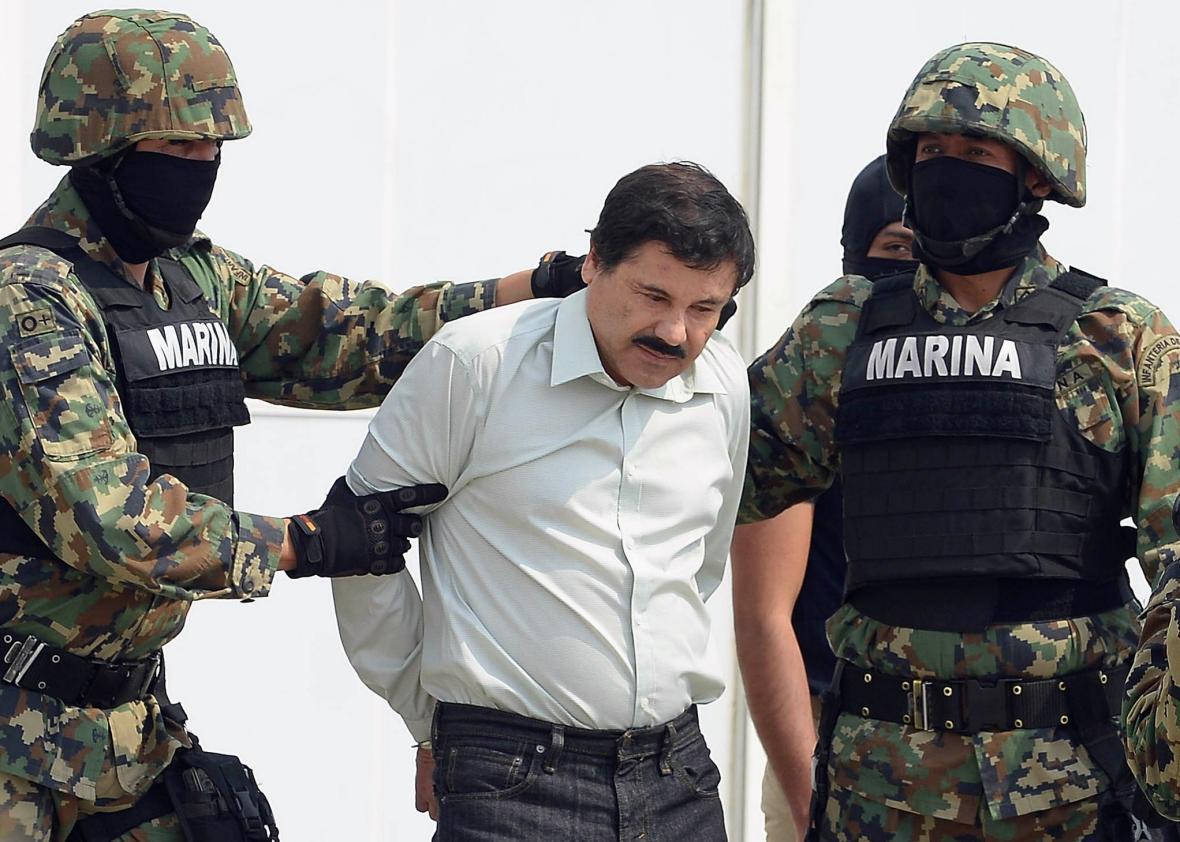Sinaloa cartel boss Joaquín “El Chapo” Guzmán’s tunnel escape from prison this weekend doesn’t exactly come as a shock given the ex-billionaire criminal mastermind’s track record. He’s escaped from high-security prison before, via laundry cart in 2001. He’s familiar with the method, having used tunnels to revolutionize the drug trade in the late 1980s. And the security arrangements surrounding him haven’t seemed that secure: His defense team smuggled in a woman to meet him in April.
It took 13 years to recapture Guzmán the last time he escaped, and Mexico’s government will face a new round of humiliating criticism, including from the United States, which had been pushing to extradite him to face trial in New York.
Since taking office in 2012, President Enrique Peña Nieto has sought, with mixed success, to make Mexico better known for economic growth than the horrific drug violence that erupted under his predecessor, Felipe Calderón. But events, including the mass protests last year over the kidnapping and murder of 43 students in Guerrero state—likely with the involvement of local government—have kept the country in the spotlight for the wrong reasons.
Peña Nieto touted the country’s lower murder rate—down 29 percent between 2012 and 2014—in an interview with Slate last year, and makes frequent mention of the capture of 92 of Mexico’s most wanted criminals, including Guzmán.
Violence has undoubtedly declined in many parts of Mexico, including cities like Juárez that were nearly war zones under Calderón. But some analysts say the government is using accounting tricks to make the improvements seem more dramatic, such as classifying fewer deaths as “intentional homicides.” The violence has also dispersed out of urban centers like Juárez, making it harder to measure. The utter dominance of Guzmán’s Sinaloa cartel over valuable smuggling corridors may also be another reason for the decline: There are fewer rivals, so fewer fights. (And in some cases, the capture of senior leaders can lead to more violence as their successors fight over territory and resources.)
Peña Nieto’s administration has been subtler than its predecessor about parading captured drug lords in front of the cameras as evidence of victory in the drug war—a practice widely criticized as the violence spiraled out of control under Calderón.
But the government still hasn’t been able to resist using the capture of top bosses like Guzmán and cocaine kingpin Hector Beltrán Levya as evidence that even as security remains elusive in some parts of the country, the era of the cartels is coming to an end. That’s going to be a tougher sell with El Chapo back in action.
